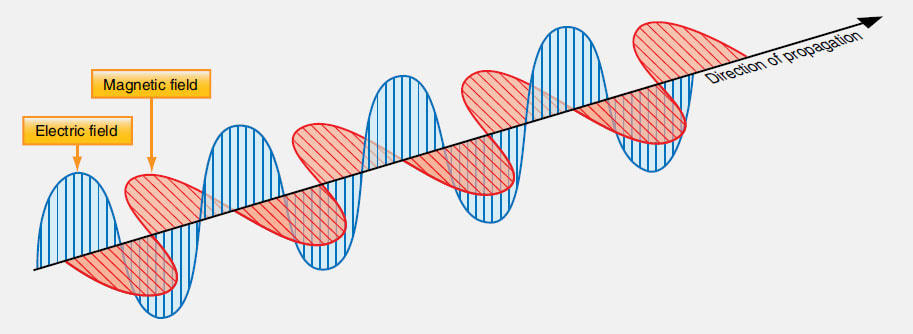Wavelength
Photo Credit: Autodesk
There are four basic characteristics of a wavelength. They are the crest (high point), the trough (low point), the wavelength (distance from one crest, or trough, to another), and the amplitude (height of crest, or trough). A frequency is the number of complete wavelengths that pass a given point measured in seconds (Hz). A wave is connected by using: Speed = frequency x wavelength.
Electromagnetic Spectrum
Photo Credit: Flight Mechanic
The magnetic spectrum is made up of gamma rays, x-ray, ultraviolet rays, visible light, infrared, microwave and radio rays. The radio waves utilized for aircraft communication range from 3 MHz to 3 GHz. A high frequency has a shorter wavelength, and a short frequency has a higher wavelength. It is important to understand the difference in frequency bands, because this will determine which frequency would best aid in communicating with the aircraft. This mostly depends on the geographical location of the aircraft and radio antenna.
Electric & Magnetic Field
Photo Credit: Flight Mechanic
An alternating current is applied to a radio antenna, and a conductor that is half the wavelength of the frequency, travels the length of the antenna in the opposite direction. The number of times of this consistent motion is what determines the radio frequency. The radio wave is directional and propagates toward space; known as polarization. The traveling distance depends on the length of the frequency and the amplification of the alternating current in the antenna. Thus, the electric field and magnetic field are set at 90 degrees from each other, and in the direction of the frequency.


